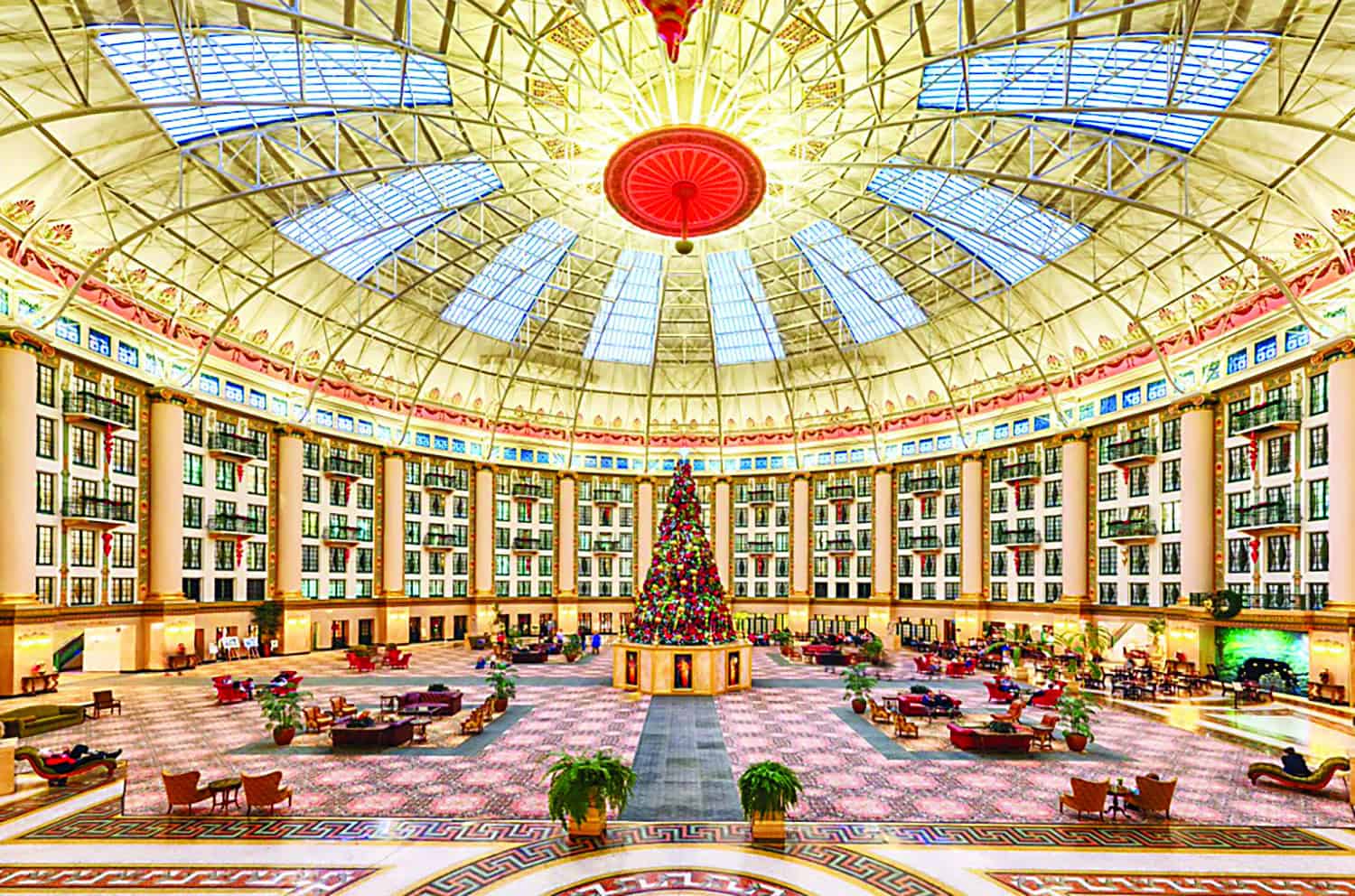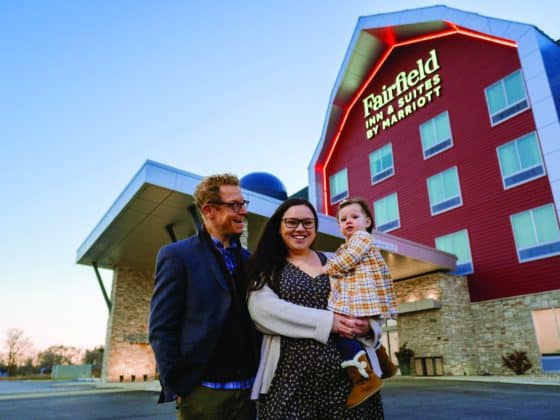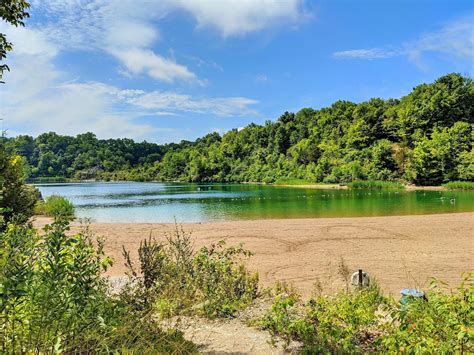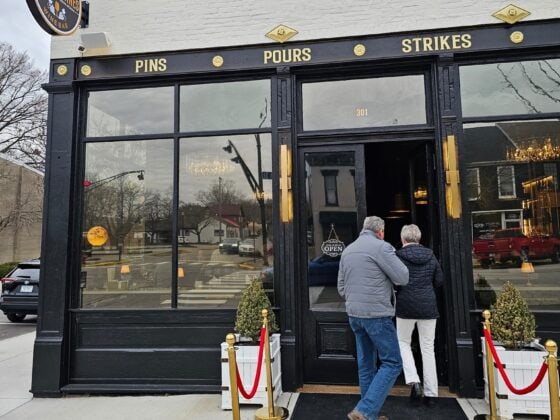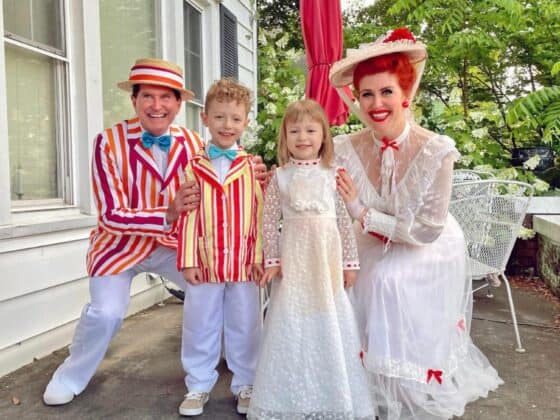story by GLENDA WINDERS
Walk in the footsteps of a U.S. president, celebrities, and gangsters and discover the storied past of French Lick’s sister resorts, while enjoying the luxuries of spas, fine dining, and luxe accommodations. French Lick has a deep, rich history all its own. Its two grande dames are,
of course, the French Lick Springs Hotel and the West Baden Springs Hotel, each of which has a storied past.
Where the hotels are located now was once fertile territory for Native American hunters because of a salt lick that wild animals visited as they traveled along the Buffalo Trace. In fact, the town was named after the French traders who had settled in this area. In 1826 the state government authorized salt-mining in the area, but the saline deposits turned out not to be commercially successful.
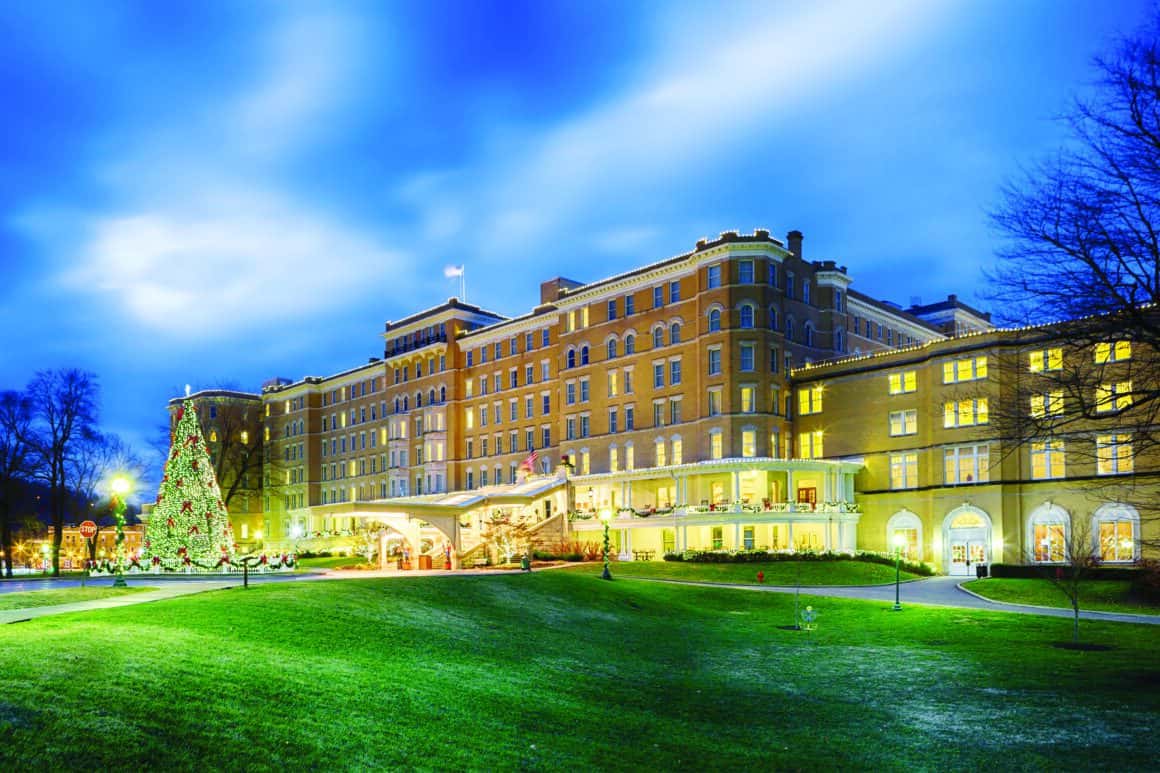
In 1832 Thomas Bowles and his physician brother, William, bought 1,500 acres of the land and around 1845 opened a hotel there. When he went off to fight in the Mexican American war the following year, he leased the land to another doctor, John Lane, on the condition that he enlarge and improve the property, which he did.
When Bowles returned five years later to reclaim his operation, Lane bought land from him and opened his own competing hotel, and the two operated as rivals for decades. Today, however, the properties are managed as sisters who share the same three sulfur springs — Lithia, Proserpine and Pluto— that are still said to heal more than 50 conditions and diseases. The contemporary owners still honor the two hotels’ traditions, and visitors still come to take the waters in a variety of ways. The Spa at French Lick offers 28 rooms for massages, facials, wraps, and soaking in Pluto Water. At the Spa at West Baden the same services are available along with a two- level natatorium.

Whether you’re coming for spa treatments, swimming, cycling, golf, gaming, horseback riding, archery, pickleball, hiking, dining, or something else out in town, enhance your experience by learning more about the storied past of these hotels, both of which are on the National Register of Historic Places. Several possible options will enable you to do just that. A tour of the French Lick hotel will yield several surprising bits of information. You’ll learn, for example, what U.S. president launched his campaign here, how tomato juice happened to be invented here in 1917, why gambling was shut down in 1949 and what celebrities have stayed here over the years.
A similar tour of the West Baden hotel will reveal how the building, with its unusual architecture and spectacular 200-foot free- span glass dome was built in less than a year. And maybe you’ll be able to help solve the mystery of the Angel Room, a tiny, drum- shaped room above the medallion in the middle of the dome. Inside, someone painted three exquisite angels, but no one knows for sure who the artist was.

Return to the Roaring 1920s with a Twilight Tour, when costumed interpreters will portray such famous guests as golfer Walter Hagen, writer Edna Ferber, and the “unsinkable” Molly Brown, and tell their stories. Other possibilities include visiting the resident historian to ask questions or booking a trip into town with him on a Historical Trolley Tour to learn even more about
the area. If you’d rather browse about on your own, grab a map and follow the Ferguson Trail to take the self-guided Historical Walking Tour. At West Baden, learn for yourself how the Chicago Cubs won the World Series in 1908 after training here. You’ll also find out that this National Historic Landmark has spent time as a Jesuit seminary, a U.S. Army Hospital, and a private college. Be sure to make a stop at the sunken gardens.
At French Lick find out about the legendary guests who once came here to party and rub shoulders with celebrities, politicians, and gangsters. You’ll also learn about the many iterations and additions to the building, how it went into decline after the Great Depression, and the many times it has changed hands since then.

While you’re in the area, check out some other historic places nearby that have earned spots on the National Register of Historic Places. They are: the Thomas Braxton House (now a bed-and- breakfast), the Dixie Garage, the First Baptist Church, the Homestead Hotel, Jenkins Place with two historic homes, Lindley House, Lynd School, Newberry Friends Meeting House, Orange County Courthouse, and the Orleans Historic District for a variety of architectural styles, the Oxford Hotel, and Paoli Historic District with 144 notable buildings and West Baden National Bank.
At the end of the day, plan to dine at one of the hotels, where even the restaurants have been touched by history. French Lick’s fine-dining restaurant is 1875: The Steakhouse, named for the first Kentucky Derby run not far away. Sinclair’s Restaurant at West Baden is named for one of the hotel’s early owners, as is Café Sinclair. The focal point at the Power Plant Bar and Grill is the electrical switchboard that once powered the French Lick hotel.
French Lick-West Baden is chockful of present-day amenities, and while you’re here you can relax, rejuvenate and contemplate what has gone before in its past.
For more information visit: visitfrenchlickwestbaden.com


